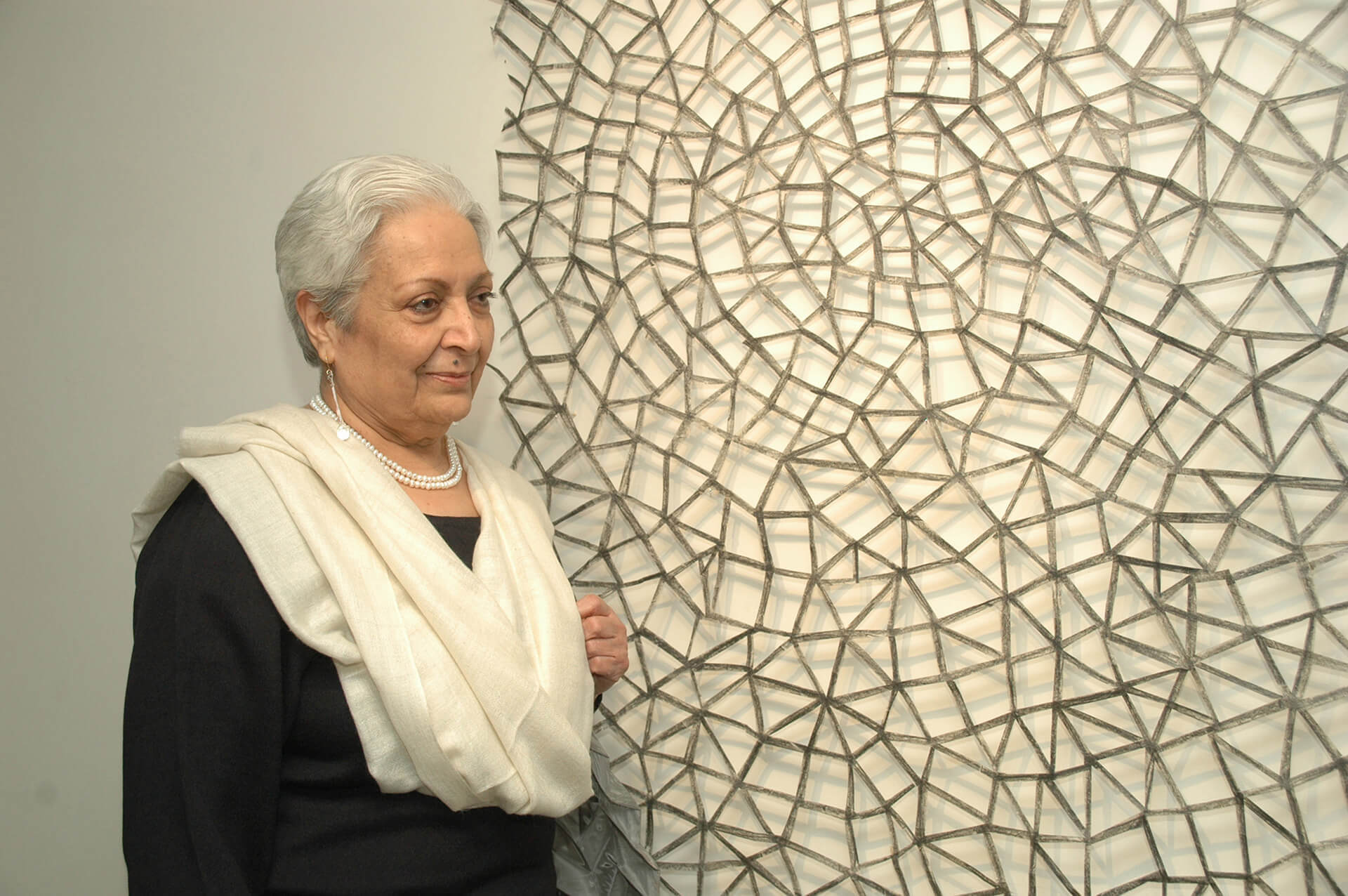On the occasion of the 86th birth anniversary of Indian-American artist and printmaker Zarina Hashmi, Google paid tribute with a sepia-toned doodle. The artwork beautifully portrays Hashmi’s distinctive style, characterized by minimalist abstract and geometric shapes, which delve into profound themes of home, displacement, borders, and memory.
Today, Google Doodle commemorates the 86th birthday of Zarina Hashmi, a highly influential Indian American artist. The doodle, designed by guest illustrator Tara Anand from New York, pays tribute to Hashmi’s artistic style, incorporating her distinctive geometric and minimalist abstract shapes.
Media reports highlight Hashmi’s remarkable talents in sculptures, prints, and drawings, which aligned with the Minimalist movement. Her artwork skillfully employed abstract and geometric forms, evoking profound spiritual experiences in viewers.
Born in 1937 in Aligarh, India, Zarina Hashmi had a contented childhood until the partition of India forced her family and many others to move to Karachi, Pakistan. At 21, she married a diplomat, embarking on a journey that took her across the world, where she immersed herself in printmaking and was influenced by modernist and abstract art movements.
In 1977, Hashmi moved to New York City, becoming a vocal advocate for women and female artists of color. She joined the Heresies Collective, a feminist journal exploring the intersection of politics, art, and social justice, and taught at the New York Feminist Art Institute to provide equitable educational opportunities for women artists. She co-curated the groundbreaking exhibition “Dialectics of Isolation: An Exhibition of Third World Women Artists of the United States” at A.I.R. Gallery in 1980, showcasing the perspectives of marginalized women artists.
Her captivating intaglio and woodcut prints depicted the houses and cities she lived in throughout her life. Influenced by her identity as an Indian Muslim woman and her experiences of constant movement, her artwork often featured elements inspired by Islamic religious decorations, with precise geometrical patterns.
Zarina Hashmi’s early works, with their abstract and geometric aesthetics, drew comparisons to renowned minimalists like Sol LeWitt. Her art continues to captivate audiences globally and is featured in esteemed institutions like the San Francisco Museum of Modern Art, the Whitney Museum of American Art, the Solomon R. Guggenheim Museum, the Metropolitan Museum of Art, and other prestigious galleries, testifying to the enduring significance of her artistic contributions.

